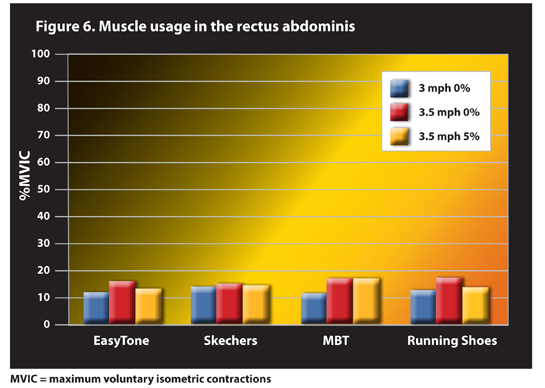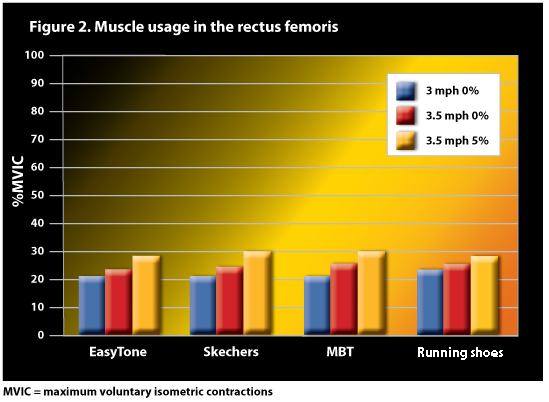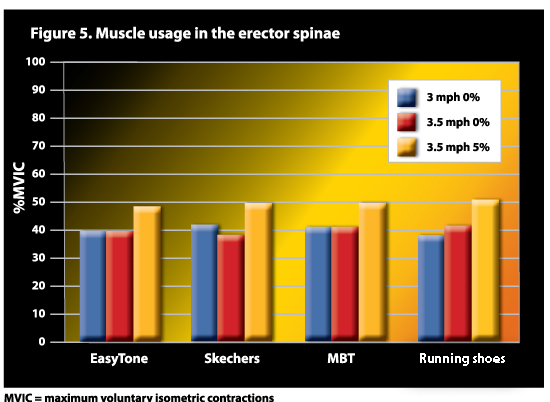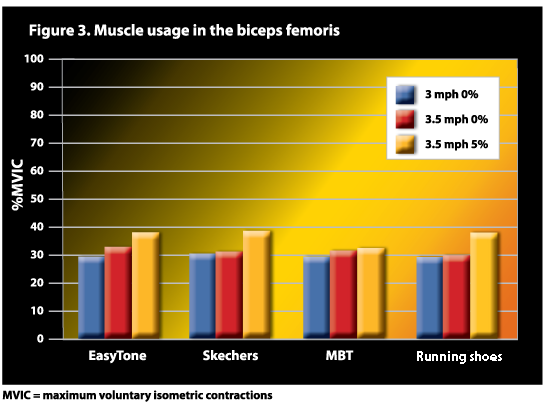"burn more calories, tone muscles, improve posture, reduce joint stress" and "it's the shoe proven to work your hamstrings and calves up to 11 percent harder. And tones your butt up to 28 percent more than regular sneakers just by walking."
Toning shoes function based on an unbalanced sole design, which forces the wearer to work harder to stabilize their body and balance. This theory is strikingly similar to the concept of using free weights vs. machines. Lifting free weights actually requires more force output and activates more muscles because it requires the lifter to balance and stabilize the weight, whereas with machines there is no stabilization or balance component. Regardless, I'm skeptical of any "magic exercise device" that promises extraordinary results and wanted to investigate further. Come on, shoes that are specifically designed to tone your ass and legs, reduce cellulite, improve posture, and burn extra calories? Sounds like bulls!*% to me. Luckily, my personal training organization, ACE, recently published a study looking at the effectiveness of these shoes.
The Study:
ACE compared Shape-Ups, EasyTone, MBT, and running shoes across five criteria: muscle activation in six regions of the body (gastrocnemius-calves, rectus femoris-quads, biceps femoris-hamstrings, gluteus maximus-butt, erector spinae-spine muscles/posture, and rectus abdominis-abs), caloric expenditure, heart rate, ratings of perceived exertion (subjective evaluation of how hard you think you're working, scale from 1-10) and oxygen consumption. ACE conducted two sub-experiments, the first testing muscle activation and the second testing the other four criteria. Twelve physically active females aged 19-27 were selected for each study (24 total) and were each required to complete twelve, five-minute exercise trials. Subjects walked on a treadmill for five minutes wearing each type of shoe at random under three conditions: 3.0 mph with no incline, 3.5 mph with no incline, and 3.5mph with a 5% grade incline. Muscle activation was measured in each location using electromyography (aka electrodes).
Results:
The second test measured muscle activation based on MVIC (maximum voluntary isometric contractions). Although some individual muscle groups showed minor differences, as a whole muscle activation was identical across the four types of shoes. At times the results favored running shoes, and at times they favored different toning shoes, but none of the results were statistically significant enough to prove effectiveness.
Although the study only tested 24 subjects, the results showed virtually no differences between different types of toning shoes and running shoes. Typically toning shoes can run $100-$250. Save your money and invest it elsewhere, toning shoes aren't worth it.
If you would like to see the full study report please visit:
http://www.acefitness.org/certifiednewsarticle/720/will-toning-shoes-really-give-you-a-better-body/?utm_source=Certified%2BNews&utm_medium=email&utm_term=July%2B2010&utm_campaign=Certified%2BNews&CMP=EMC-CertifiedNews_0710#









No comments:
Post a Comment